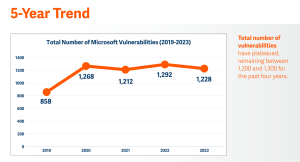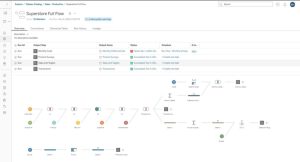Digital in-home electrical meters provide utilities with up-to-date data to plan power generation to meet new work-from-home usage patterns.
As millions of US residents work from home and stay at home under COVID-19 pandemic quarantines, electrical power generation companies are responding by adjusting power schedules to meet a different set of power needs. Part of what’s helping to make those changes are the latest automated digital smart meters used in homes and small businesses, which are allowing power companies to respond to changing power usage patterns in real time.
Overall, as stay-at-home mandates sprang up across the US since March, power companies have seen residential electrical consumption rise by 5% to 10%, while commercial and industrial usage have fallen in comparison, said Frank Monforte, director of forecasting solutions at Itron, which tracks power usage and provides consumption forecasting for electrical utilities in North America, Europe and Australia.
“As people are staying at home and a lot of businesses are not open, if you look at the aggregate load, the total amount of electricity being used, that profile is changing,” Monforte said. That system load, which is the sum of power consumption across all residential and businesses, transportation systems, streetlights and everything else, can then be compared to the normal system load that would be expected at this time of year.
SEE: Guide to Becoming a Digital Transformation Champion (TechRepublic Premium)
Those details are important during the COVID-19 pandemic or any other emergency, disruption, or seasonal change so utilities can ensure sufficient power generation supplies to meet the system loads.
“This time of year, you’d expect to see the system load rising around 5 a.m. daily as businesses and stores begin to open and operate, and as people are waking for work and school,” Monforte said. As that occurs, electrical utilities are simultaneously ramping up their available power.
“We always have that happening,” he said, but with most people being forced to stay at home and with most businesses not opening daily due to the pandemic, Itron is not seeing those power ramp-ups coming on lately until about 7 a.m. “We have not seen that exact behavior before,” he said.
Tracking and anticipating these power usage patterns is critical for electrical utilities because for the most part, all power generated must be consumed immediately or is lost. If more electricity is being generated than is being used at any one time, then utilities are spending money for power that is wasted.
“So, system operators want to operate the grid as efficiently, as cost effectively, as possible, but they also want to be sure the lights stay on for people when they are needed,” Monforte said. “It’s a balancing act, but it’s also an absolute mandate. You need to keep the power on.”
That’s where Itron’s load estimates help utilities constantly prepare for those changing requirements, and that’s why it’s important that those load forecasts reflect reality. Itron’s forecasts, which are provided for clients in more than 100 countries, can stretch out to as many as 50 years for clients that need such predictions.
To provide the most accurate data needed for its forecasts, Itron tracks real-time consumption information gathered from millions of smart digital power meters that have been installed in residential and small business properties across the US over the last decade.
The special meters are part of an advanced metering infrastructure (AMI) system that allows utilities to see and measure actual power use on a 15-minute by 15-minute basis for billing purposes, rather than measuring use just once every 30 or 60 days as in the past. AMI systems include smart meters as well as communications networks and data management systems that are linked together, resulting in detailed power use information for power consumption forecasting.
“We have modeling approaches that can learn from the most recent data to match or accurately predict the new system load shapes,” said Monforte. “It’s very important to get the system load data right. That’s why we use AMI.”
The old types of residential and small business power meters provide only a measurement of how much power was consumed from one billing date to the next, without providing any details about when it was used. That makes it impossible for utility companies to see shifts in usage as they were happening.
Using old meters, consumption forecasts had to be reached using more general information, including seasons, temperatures, populations, and other factors which were then compared to historic trends.
The old meters were read every other 30 days and would show starting consumption and ending consumption. In the past, only large commercial power users, including factories, industrial plants, large retailers and others, have been using AMI interval metering for their billings.
By having AMI data on residential and small business customers, analysts can now compare it to historic data and see the trends change while they happen, Monforte said. “I can tell a story about how behavior is changing.”
The coronavirus pandemic and the changing power consumption patterns that continue to be seen are dramatically showing the importance of real-time AMI data, Monforte said. The data is analyzed using machine learning algorithms, multivariate regressions, and neural networks to provide the latest forecasts about when power must be generated and at what levels.
“And that’s important to us all so the power will work when we flip the switch and expect the power,” said Monforte.
The AMI data will also be critical as communities around the nation start to loosen their stay-at-home restrictions that are in place due to the virus.
“When we start to reopen the economy, the AMI data will be helpful in predictions of what is to come,” he said. We can use the AMI data to predict what the new loads will look like as we reopen things. That helps improve the forecasts and helps power companies have the power that will be needed.”
Also see

Source of Article




